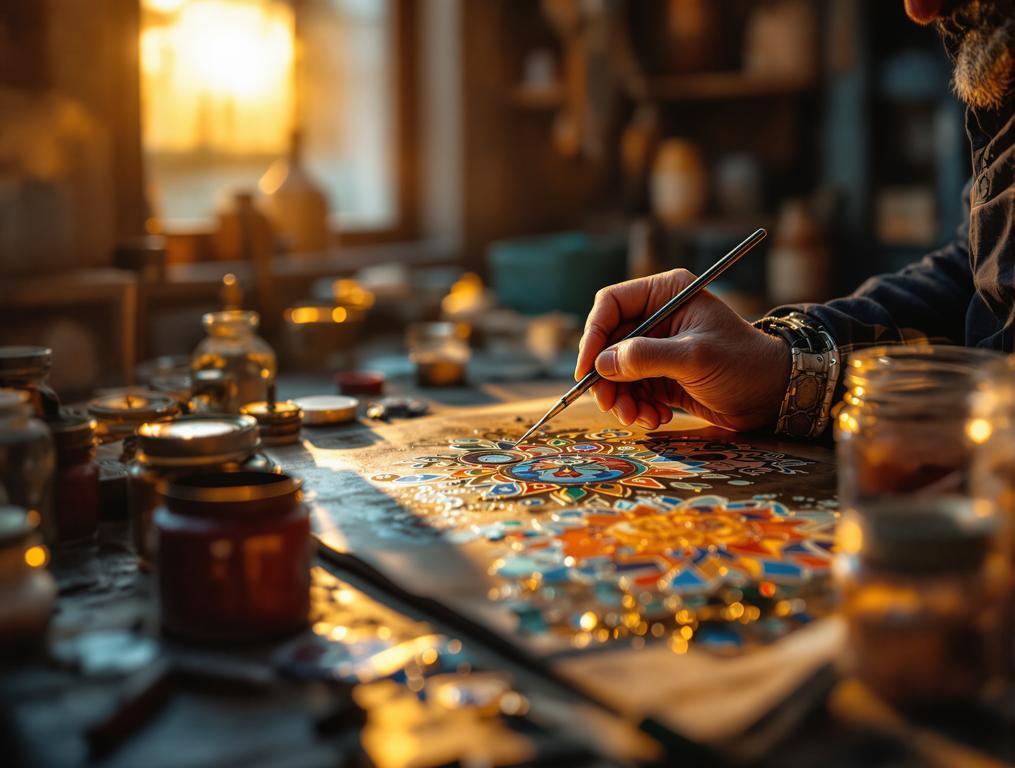The enamel artist’s fingers dance across the tiny copper canvas, his brush adding specks of blue no larger than a grain of rice. I’ve slipped into his workshop on a cobbled backstreet of Rostov Veliky, 202 kilometers northeast of Moscow. While most Golden Ring visitors crowd into Suzdal’s souvenir shops, this 1,163-year-old town harbors Russia’s most exquisite craft tradition. The smell of metal and mineral pigments fills the air as the craftsman holds up his creation – a miniature scene of the Rostov Kremlin painted entirely in vibrant enamel.
This ancient settlement on the shores of Lake Nero exists in a curious time bubble. Founded in 862 AD, it maintains a soul that larger Russian destinations sacrificed decades ago to mass tourism. Here, in a town of 30,406 residents, I’ve discovered the secret capital of Russia’s most distinctive heritage craft.
Russia’s 1,163-Year-Old Secret Craft Capital
The tradition of finift – Russian enamel art – survived 11 centuries in these quiet streets. While many heritage crafts vanished during Soviet industrialization, Rostov’s enamel workshops endured through generations of political upheaval.
“We use the same basic techniques our ancestors developed in the 18th century,” explains my guide in the Rostov Enamel Museum. Each piece begins with a copper base, covered with white enamel powder, then fired at 800 degrees Celsius. Artists paint intricate designs using mineral pigments before additional firings seal the artwork permanently.
What separates Rostov’s finift from other enamel traditions is its connection to Russian Orthodox imagery. Many artisans create miniature religious icons, continuing a practice that managed to survive even during the Soviet era’s religious restrictions.
Outside the Kremlin walls, a small market displays works from local artisans. Prices range from 500 rubles for simple pendants to 50,000+ rubles for museum-quality pieces. Unlike mass-produced souvenirs found elsewhere, each item here represents hours of painstaking craftsmanship.
How This Ancient Art Survived When Others Disappeared
Rostov’s preservation of finift stands in stark contrast to what happened in other historic towns. While similar ancient settlements throughout Europe saw traditional crafts commercialized beyond recognition, Rostov maintained authenticity through isolation and community pride.
The town’s relative obscurity compared to Golden Ring stars like Suzdal proved beneficial. With fewer international visitors, artisans continued creating for local markets and Russian collectors rather than adapting to tourist demands.
“When my grandmother taught me finift painting, she said our hands must remember what our minds might forget. Every brush stroke carries a thousand years of our town’s soul.”
What’s remarkable is how the craft evolved while maintaining tradition. Contemporary artists use traditional techniques but incorporate modern designs alongside classical motifs. This adaptation kept finift relevant while preserving its core identity.
The Russian town shares surprising similarities with Rothenburg ob der Tauber in Germany – both medieval settlements with preserved architecture. But while Rothenburg sees 2.5 million visitors annually, Rostov’s tourism remains manageable, allowing authentic cultural experiences instead of staged performances.
Workshop Access: Becoming A Temporary Apprentice
The true magic of Rostov lies in hands-on experiences unavailable elsewhere. Several workshops near the House of Crafts offer 90-minute classes where visitors can create simple enamel pieces under master guidance.
Access requires advance booking, especially during the annual Enamel Festival held each July-August. The medieval cultural preservation extends beyond crafts to architecture, with the town’s stunning Kremlin complex housing 11 towers and 7 churches.
For optimal workshop access, arrive via the Rostov Yaroslavsky train station (2.5 hours from Moscow) and stay at guesthouses near the Kremlin rather than attempting a day trip. Morning workshops typically have fewer participants and more attentive instruction.
My workshop teacher Marina demonstrates remarkable patience as I struggle with the delicate brushwork. “Ne toropis,” she gently reminds me – don’t rush. In finift, as in Russian culture itself, hurrying produces nothing worthwhile.
Summer 2025: The Perfect Moment To Experience Finift Art
This summer offers a rare convergence of craft opportunities. The 2025 Enamel Festival coincides with major restoration completions in the Kremlin, allowing visitors to experience both renewed architecture and living craft traditions simultaneously.
Unlike winter months when Lake Nero freezes and outdoor activities diminish, summer brings the shoreline alive with locals fishing from wooden boats and monks tending gardens at the Spaso-Yakovlevsky Monastery.
As I leave the workshop with my modest creation – a simple blue flower that would make any serious artisan wince – I realize Rostov Veliky offers something increasingly rare in our world: a craft tradition that refused to sacrifice quality for commerce.
Sarah photographs an elderly artisan outside his workshop, his hands stained with decades of pigment. Like the town itself, he seems unbothered by passing trends, connected instead to something far more enduring. In Rostov’s quiet streets, Russia’s artistic soul remains intact, waiting for those patient enough to discover it.
